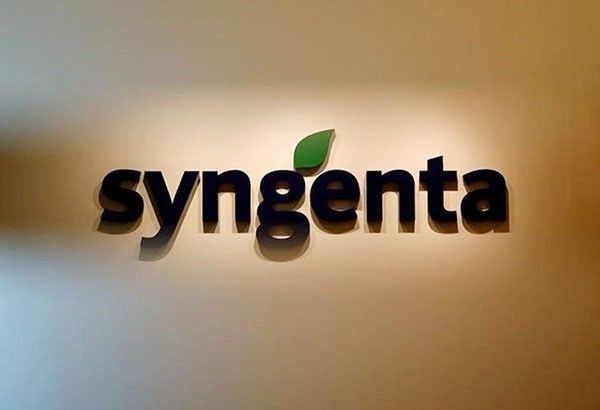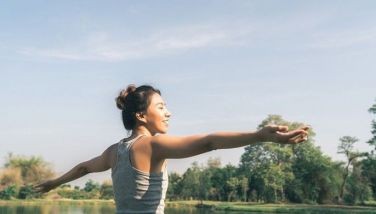Sustainable food in the future through technology

Syngenta steps up r&d efforts
RAIPUR, India – With world population projected to grow by a third or two billion by 2050, the challenge of feeding more mouths lies on agriculturally rich countries, including the Philippines, amid volatile weather conditions, declining farm output, and dwindling numbers of farmers.
Swiss agri-business and biotechnology giant Syngenta is beefing up efforts to bring greater food security in an environmentally sustainable way through the creation of worldwide step change in farm productivity.
And this move goes across all regions particularly in the Asia-Pacific where major agricultural goods are being produced but the increasing problems of labor, climate change, crop quality and lack of support to smallholder farmers remain unsolved.
The Philippines itself is no exception.
Syngenta continues to invest a portion of its annual $1.4 billion budget for research and development in the Philippines through its rice breeding facility in General Santos City and various field trials across the country to give knowledge to farmers on how to increase yields through biotechnology.
“We need to have centers of excellence in terms of breeding and research and to develop multisite locations which allow us to evaluate the seeds if they work well here as they do in other countries,” said Tina Lawton, Syngenta Asia Pacific regional director.
“We always invest in upgrading the facility. It’s more of making sure that the team is well-equipped with skills sets to be able to do their jobs efficiently,” she added.
The breeding facility in Mindanao is among the main facilities for the whole Asia-Pacific, aside from the ones in India, Vietnam, Indonesia and China.
While the notion of achieving rice self-sufficiency in the Philippines has been a policy of almost all past administrations, the government has made public its plan to further strengthen hybridization as it aims to be self-sufficient in rice production by 2019.
“Consumer acceptance would be a big factor to the move towards hybridization in the Philippines and that’s gonna be important but that will be the key. Hybrid rice need to be accepted by the market,” said Andrew McConville, Syngenta Asia Pacific Corporate Affairs head.
The Department of Agriculture has already invested P131 million in seeds to intensify hybrid rice expansion in Mindanao in line with efforts to increase farmers’ income and alleviate poverty.
The agency also plans to expand hybrid rice area to 600,000 to 700,000 hectares next year and as much as one million by 2020 from the current 400,000 hectares.
“Our target is self-sufficiency that we would like to achieve through hybrid rice. We want to have farmers who can have twice the production from what they harvest now,” DA senior technical adviser Santiago Obien said.
With hybrid rice, farmers can harvest higher yields of nine to ten metric tons (MT) per hectare from the current four MT per hectare.
“As long as the government is clear with what its framework and knows what it’s trying to achieve, then we will work with the government to achieve their objectives,” McConville said.
McConville also underscored the importance of partnership that roots well in technology and knowledge and which goes in an end-to-end value chain approach.
“Partnership makes sense if you’re growing the overall size of the pie as it will benefit everyone. Farmers earn more and the government also earns additional revenues,” he said.
Another problem in most countries, particularly in the Philippines, is labor where less and less individuals are into farming.
Studies project that four years from now, 60 percent of the country’s population will leave rural areas to settle in cities.
“That’s why we want to empower more smallholders and increase average productivity of the world’s major crops by 20 percent without using more land, water and other inputs,” Lawton said.
Empowering people in rural economies across the globe could produce an extra $2 trillion of yearly output by 2030, Syngenta said.
Globally, Syngenta aims to grow more crops while using less water and fewer products; cope with volatile weather, flood and drought; meet rising demand for more food of higher quality; and encourage more farmers to adopt new technologies.
The agriculture company aims to help improve global food security by enabling millions of farmers to make better use of available resources.
Syngenta is also committed to rescuing land from degradation, enhancing biodiversity and revitalizing rural communities in over 90 countries it is involved with.
In Asia Pacific alone, Syngenta’s footprint extends to 15 countries, with combined sales of $1.9 billion last year.
As of the third quarter, the region recorded a 22 percent growth in sales due to the end of El Niño phenomenon and a better monsoon.
Demand for crop protection products was strong, particularly for fungicides in ASEAN and insecticides in South Asia.
Seeds sales were also driven by high demand for conventional corn in South Asia and for GM hybrids in the Philippines.
Founded in 2000, Syngenta came from the agricultural divisions of Novartis and AstraZeneca. It is publicly listed on the Swiss Stock Exchange and the New York Stock Exchange.
- Latest
























